Rediscovering magical Andalucía on horseback

Roula Khalaf, Editor of the FT, selects her favourite stories in this weekly newsletter.
A few years ago, I went to a birthday party in the Andalucían capital of Seville, thrown by a dear friend who danced flamenco. I had long thought that this southern part of Spain had been entirely squandered by tourism, its old soul ruined by a rapacious industry that is at best ugly, and at worst the end of the line for the natural world. Instead, I felt like I had entered the pages of some of my favourite books: The Story of Ferdinand, the bull so seduced by the flowers in the women’s hair that he lies down in the middle of the bullring to enjoy them, or Laurie Lee’s between-the-wars adventure As I Walked Out One Midsummer Morning, which describes the author’s nights spent under Spain’s canopy of stars. At that April birthday, 200 guests filled the courtyard garden of Seville’s Casa de Pilatos, a palace dating back to the 16th century. The air was filled with roses, the hum of laughter broken by the rapid beat of the greatest dancer of them all – Juan Manuel Fernández Montoya, known as “Farruquito” – who took to the floor with a click of his heels. The crowd held its breath. There were people so moved by the beauty, they were crying. Among them, George Scott – tall, dark-haired and classically handsome. We got talking. With the ease of a native, he unravelled the flamenco culture as if it were the one into which he had been born. He was an Englishman, yet was somehow more Spanish than anyone I had ever encountered, in books or in person.
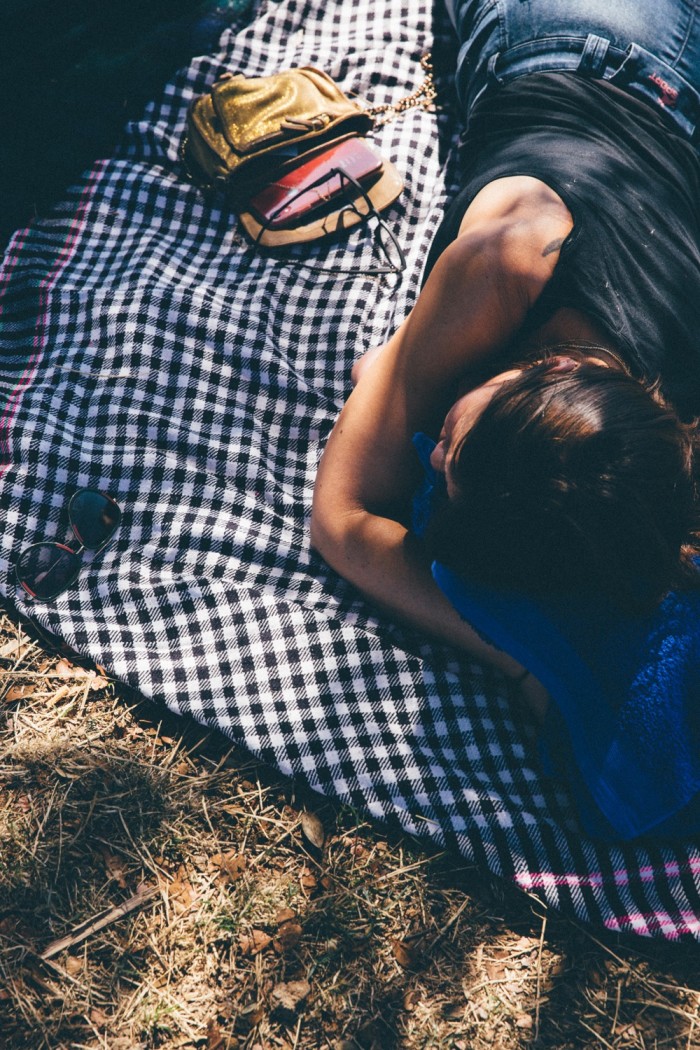
I was intrigued by his story, which I’d heard whispers about because of his family house, Trasierra, on the northern edge of Andalucía. His parents, Charlotte and Nicholas Scott, fled London in the late 1970s for another life on the rim of the Sierra Morena mountains, which unfold in purple ridges long after the holiday villas run out. These wild hills divide Andalucía’s rich farmland – peppered with groves of peach trees, olives and almonds –from the wild, harsh landscapes of Extremadura. It is a lost pocket of rural Europe, watered by tributaries of Andalucía’s majestic Rio Guadalquivir. The landscape, some 177,000 hectares of it under national protection as a nature reserve, is full of gorges, chestnut forests, ibex groves and emerald riverine valleys. While the population is thin, its history is rich, the salt and silver attracting the tough frontiersmen of passing eras, including Phoenicians, Romans and Moors. The region has also raised some of Spain’s most infamous characters, from the conquistador Francisco Pizarro, who led the Spanish conquest of Peru in the 1500s, to Spain’s most notorious highwayman, the bandolero Curro Jiménez.
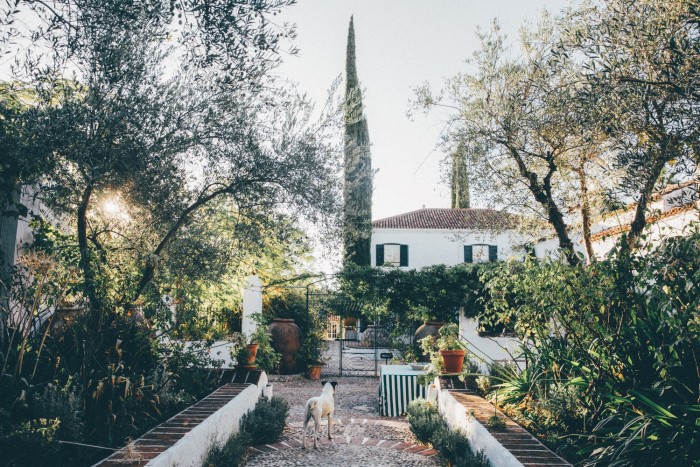
When the Scotts first arrived, Trasierra was a ruin. Charlotte describes the family living simply in the chapel with “a bed, a piano, a poodle and a pram”. They had no electricity. For six years, they relied on paraffin lamps and the light of the sun. The estate was soon transformed, with Charlotte developing the interiors and Nicholas planting the vines and bringing the 400 acres of farmland back into line. They salvaged doors from scrapyards, festooned antique beds in burlap, and converted the pigsty and stables into bedrooms with balconies and bowers of jasmine. Word spread. Trasierra was turned into a guesthouse (the house is still available to rent, though these days in its entirety rather than room by room). Fashion folk caught on: by the early ’90s, Trasierra was considered as discreet as it was elegant, its white and duck-egg-blue interiors the closest you could get to sleeping in a cloud while keeping your feet on the ground. Kate Moss returned again and again. The literati came and went. The broken green shutters got repaired. Charlotte – always with a gaggle of dogs and children at her feet – played mother, wife, decorator and hostess. She kept her four children close. They were educated at the village school. Instead of a TV, they listened to the melancholic melodies of the classical guitar. They hung onto her apron strings while wild quail bubbled on the stove. When Charlotte advertised for a private tutor to come and live with them in Spain, the ad was headlined “In search of Edward Lear”.
The enchantments of these childhood years left their mark. George’s older brother, Jackson, is now a musician in New York. His sister, Gioconda, went on to train as a chef at Francis Mallmann’s well-known restaurant, Garzón, in Uruguay. As for the tutor, his influence is inked into George’s skin: when he picks up my bag, I notice the inside of his arm is tattooed with an image of the owl and the pussycat, from Lear’s famous poem, in their pea-green boat. “My mother taught us how to dream,” says George: “She taught us about poetry, and literature, and how no idea is nonsense. She also taught us that wealth is not measured with gold.”
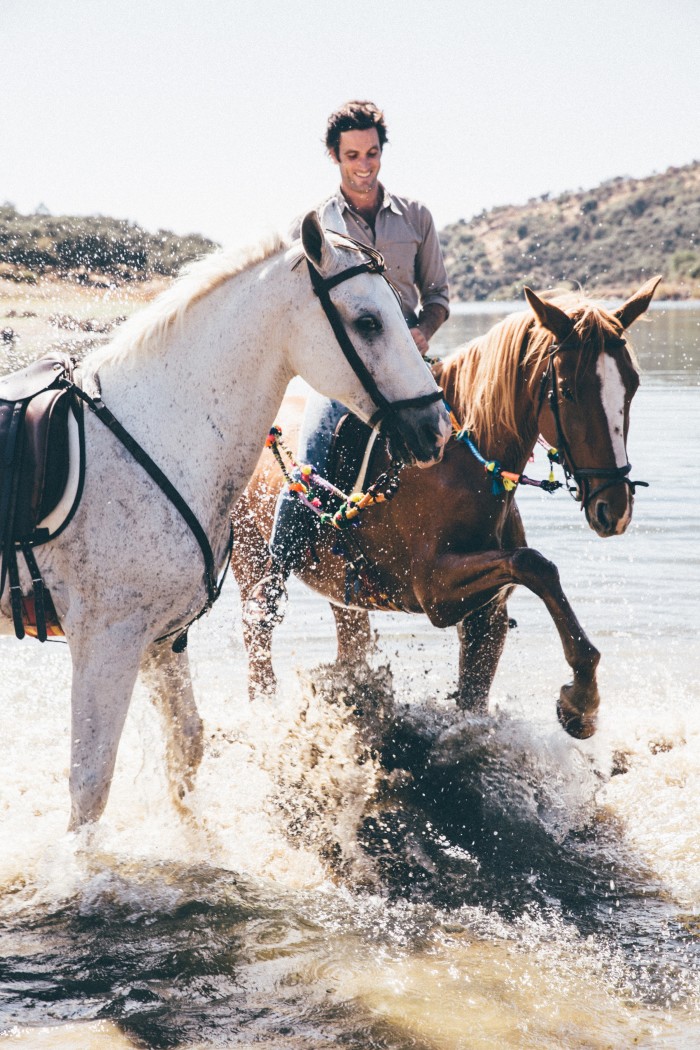
It is late September, and I am back in Spain. George is launching a new riding safari out of Trasierra: a three-night circuit travelling along the old cattle trails that criss-cross the landscape of his childhood. This is a small beginning for a bigger idea: the circuit I’m doing represents only 0.1 per cent of the trails available around the country. George is excited about the potential. Using antique maps from town archives, he has spent the last couple of years riding between homesteads, persuading Andalucía’s farmers to unsnag their fences and clear the decades of briars blocking the byways, or cordeles, as these old routes are known. According to Spanish law, these paths can be used by any animal needing to pass through the land – not bicycles, but sheep, horses and cows. The more farmers George can persuade to his way of thinking, the more his itineraries will develop, with new valleys where he can set up camp, and different private farmhouses to commandeer for overnight stays. Impermanence is the point, the concept conceived to be flexible and, above all, light on the earth. “I don’t want to scar this last bit of wildness,” he says. “It’s my ambition one day to become mayor of the local village, Cazalla de la Sierra. That way I can do more to keep this place as it is.”
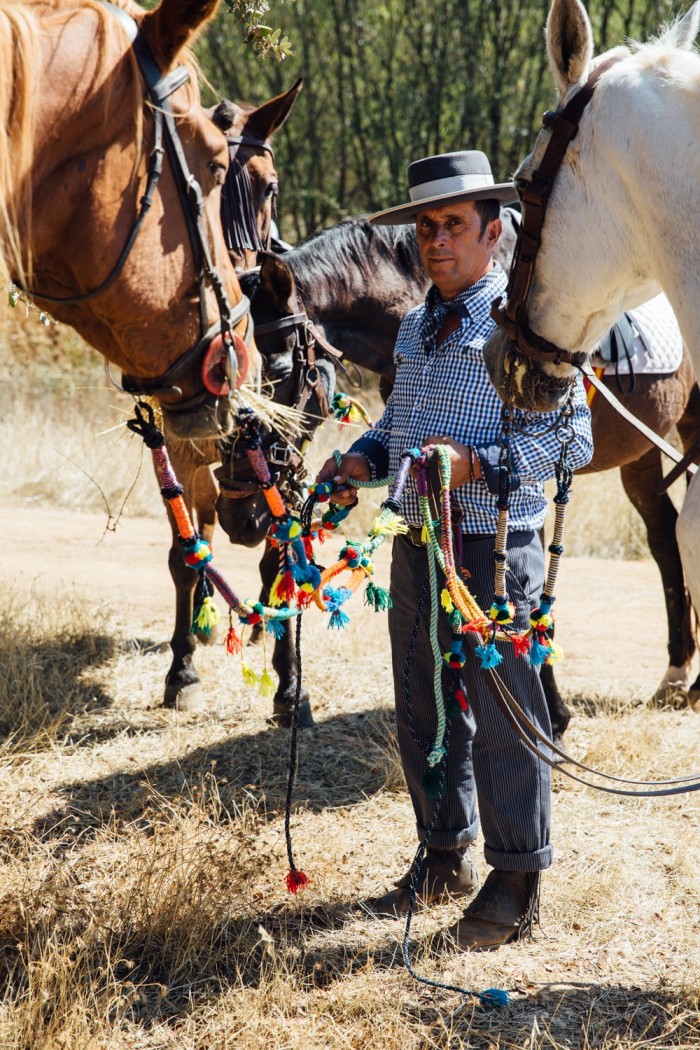
The riding safaris begin at Trasierra, where I sink into the spirit of the place beside a crackling fire. The family’s dog moves from lap to lap – a Ratonero Bodeguero, a “cellar rat dog”, created by the English who brought their Fox Terriers to Jerez (they were bred to have longer legs so they could jump onto sherry barrels to catch the vermin). Even the wines arrive with a story. The red is called Zaranda – a vineyard started by two young men from the village. The white is called Ocnos in homage to the book of poems of Luis Cernuda, one of Seville’s great 20th-century poets who used to write about the gulf between what is wished for and what can be attained. At Trasierra, the two things seem to converge.
I’m here with four friends – all of us good riders, which you need to be to do this trip. This becomes clear when we meet the horses, a mix of forward-going, Anglo-Arabian crosses, which George breeds and breaks, and Spanish Arabians, owned by neighbours. They are soft-mouthed and well-schooled, ridden with Spanish bridles with colourful, pompom-decorated reins. While the pace is generally easy, we’ve been told there will be big open spaces to hit a faster stride. You need to be “riding fit”: five to seven hours’ riding a day can take its toll. My mount, a graceful, flea-bitten grey, has a high step, a grand, arching neck and enough spirit to excite me but not enough to make me fearful. All of them are as sure-footed as fell ponies, able to pick over rocky ground, their path steered by the squeeze of a knee rather than the pull of a hand.
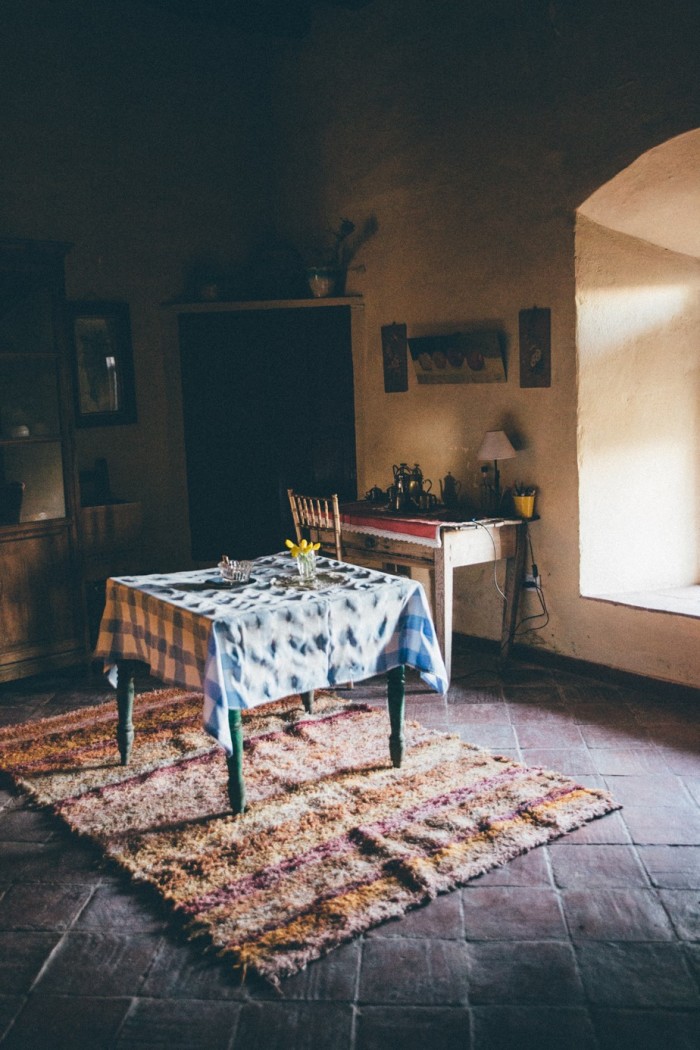
We set off, with George up front. Behind us ride his two friends. Rafael leads a black mule with four white legs – a rare cuatro alba – loaded with the day’s saddlebags; Felipo is an old classmate of George’s sister. The Andalucians wear the traditional garb of local cowboys: flat-brimmed straw and felt hats, leather chaps with elegant stitchwork and punched-leather frills. The horses are fringed with browbands to keep the flies at bay – the work of the local guarnicionero, Spain’s traditional saddle and bridle makers, who thrive in this sleepy backcountry where children learn to ride before they can walk.
The landscape is quiet. We are far from the roads. We hear little except for the breath of the horses, the crackle of insects, the crisp summer grass snapping under hooves. Occasionally we disturb a covey of partridge, or whinnying foals, which buck alongside. “The rides are like reading a book,” says George. “The slowness, the scenery, the element of surprise, and not knowing what is coming next. You can’t fast-forward or rewind or flick through the chapter of each day.”
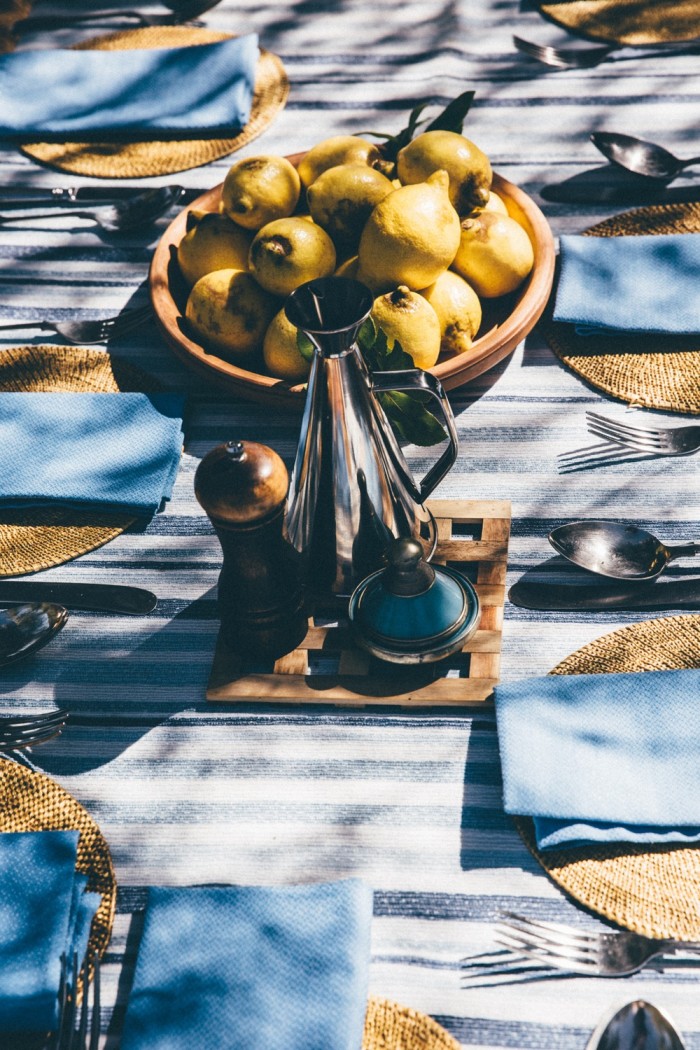
The last of the summer days stretch the shadows of the umbrella pines, their trunks casting stripes across the parched Spanish earth. The sweet sap from cedar, nurtured by months of sun, lingers in the air. The wild figs are soft and ripe, the unpicked fruit too high to reach, unless you are sitting on the back of a horse. The chestnuts have shed their spiky shells and are beginning to rot back into the leaf-mould, leaving their glossy seeds to root in land hungering for the autumn rains. The acorns are also beginning to drop – food for the black-hoofed pigs, the pata negra, which end up as haunches of Ibérico ham. When we ride through the long grass, yellow seedheads from wild fennel catch on my boots. Hours later, the little balls of scented gold fall at the spot where we break for lunch.
It’s a bewitching scene, the eye drawn to a canvas canopy with scalloped edges, pitched beside a lake. The Argentine chef – Fiona Gutiérrez, another Mallmann protégé – serves up a feast stripped of any pomp: traditional tortilla de patatas made from eggs laid by George’s chickens; a peasant bean stew flavoured with Ibérico chorizo; fresh goat’s cheese from the herds we pass; and quince, as it’s now in season. We eat our fill, then doze on a bed of chequerboard rugs. Some of us drink sherry. I like the wine from the vineyard planted 25 years ago by George’s father – a young, cloudy white, without the whiff of a sulphite. If I think this is going to be the feast of the day, I’m wrong. That evening, we pull up at the well in front of Taramona – an old farm, parts of it missing roofs and walls, dating from the 16th century. The horses are fed and watered. The candles are lit in the little vaulted chapel where the saddlehorse rubs up against icons of the Virgin Mary. We bathe in an old reservoir pool, an alberca where rainwater is stored to irrigate the farm’s modest kitchen garden. Chickens pick through the undergrowth for bugs and blackberries. Meanwhile, in the farm’s crumbling ruins, next to a working pigsty, dinner is being prepared: a round table with golden chairs laid upon a floor of sisal. The crevices are lit by a hundred candles. The cloth is bright white linen. The dinner is slow-cooked lamb, and pears poached in cardamom and saffron. We talk about ghosts, the civil war, witches, wild hares and the Spanish Inquisition. Then the story to trump all stories, told by George’s friend, José-Maria Rodríguez Santos, who has been living here alone for more than 20 years, far away from the nearest roadhead. It’s like listening to Hemingway’s tale of The Old Man and the Sea chasing the marlin, except it’s José-Maria, barely a tooth left in his mouth, in pursuit of a wild boar. Everyone falls silent as he describes his obsession; how every year, the boar got bigger. “Three years passed until I managed to shoot it. I thought I would be proud,” says José-Maria. “Instead, I felt remorse. Most wild boar are killed before they hit the age of two. This one was huge – 10 years old. I felt so sad about what I had done, I had to give its head to my brother.”
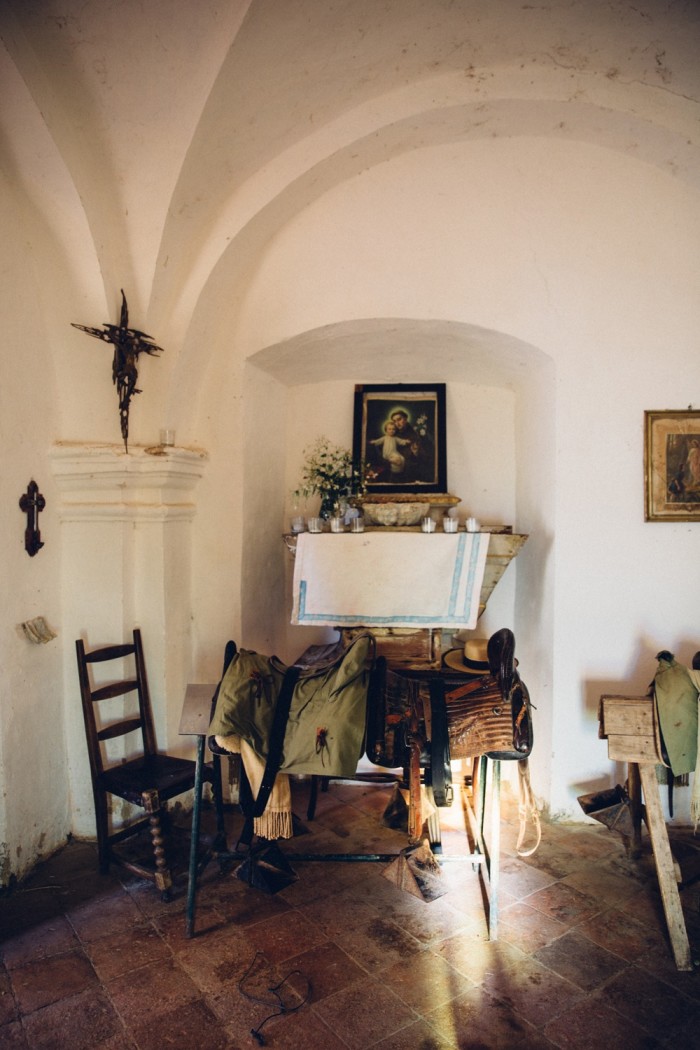
We turn in, but I can’t sleep. The farmhouse is beautiful: five simple bedrooms furnished with the prettiest of iron beds, a single scabious in a vase, an antique sink, a wooden chair. It is effortlessly comfortable, and deeply romantic, with barely any electric light. Outside, I can hear the horses shifting their stance. There is the sound of sheep bells in the hills. I slip into a place where I can’t work out if I’m dreaming about the clack of footsteps on the wooden stairs, or if there’s a ghost. But then everything about this experience feels half-true – like living a Spanish version of Alain Fournier’s novel, Le Grand Meaulnes, which describes a young man chancing upon a feast in the woods, and he never quite knows whether it is fantasy or real.
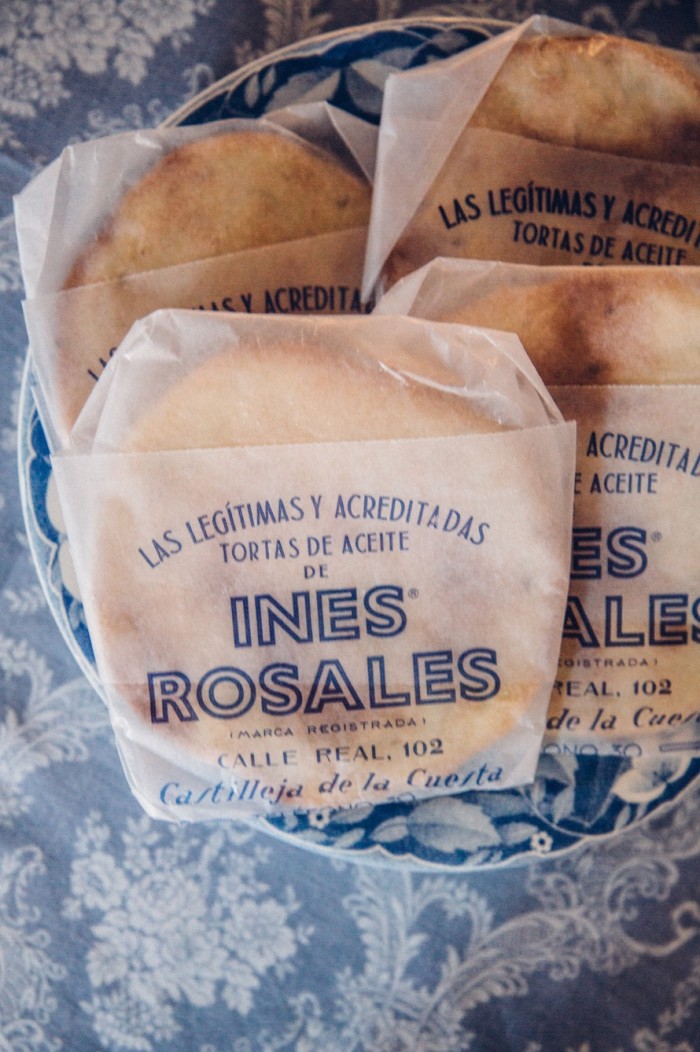
We ride, we rest, we fall into the easy rhythm of talk and silence. In the middle of the day, we picnic on the banks of a shaded brook, except the gully is dry as a bone. One of us is too sore to go on, so Rafael offers her a ride in a carriage – the chaise sequestered in the trees, as if it was always there – to reach our final camp, a four-hour ride away. We ford rivers, weave through cedar forests and cool off in belly-deep pools. We gallop hard and see no cars – not a soul, in fact, for the rest of the day. The land gets wilder, the sweat stickier, then over the brow of the last hill, smoke is curling up from a fire. Food is being baked in the embers: sweetbreads and butternut squash. Morcilla (blood sausage) is sizzling in the flames. Four Indian tents occupy the valley bowl, the canvas shaded by olives. Inside each lies a little maharaja’s fiefdom: hand-block-printed cotton walls in pinks and creams, alpaca blankets and velvet robes.
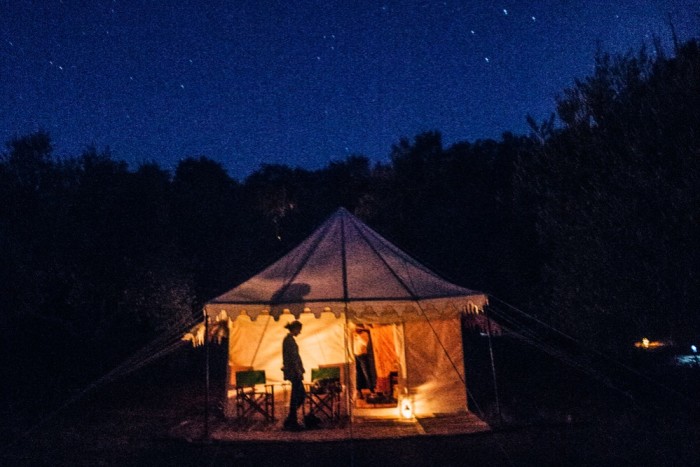
The horses are turned out to graze. We shower, drink in the sunset, then walk up to the brow of the camp where a table is laid with silver. We dine under gnarled boughs strung with lights. We savour every moment: this is travel as it should be, for tomorrow it will be gone. It is so utterly, reassuringly elegant, a million worlds away from those modern iterations of luxury – infinity pools, mega-suites, Kobe beef burgers – that have replaced our ability to imagine. “If you come back for the wildflowers in spring, I know where I’m going to take you,” says George, “and you won’t believe they are the same hills we just rode.”
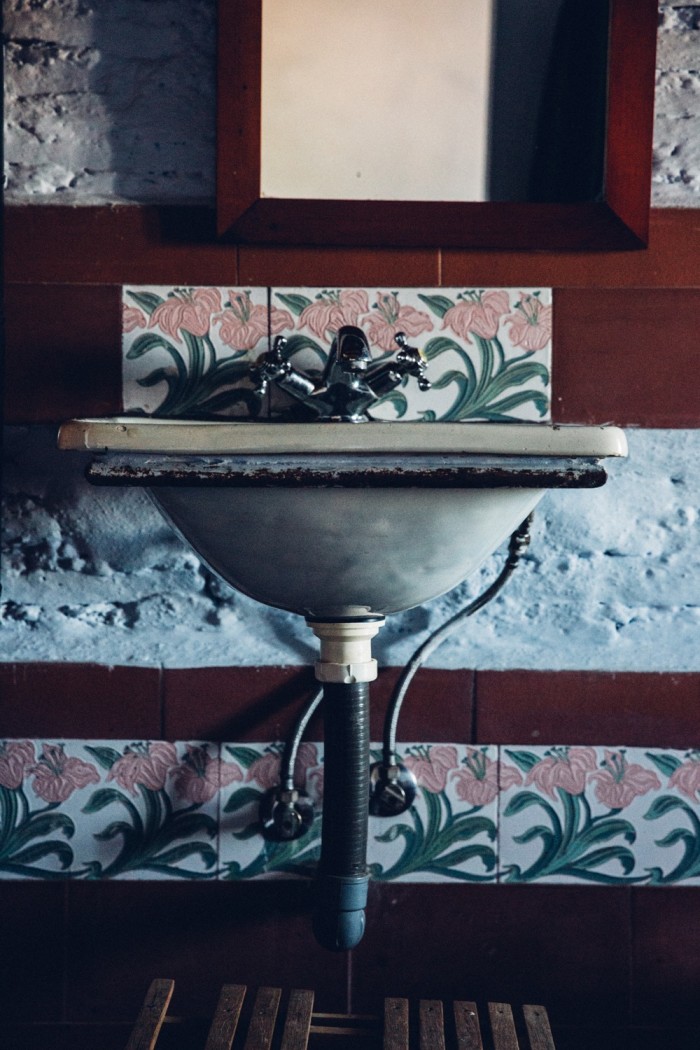
Except he is wrong. Like the great storytellers he admires, this journey has persuaded me to dream. Looking back on it all now, I know why the click of Farruquito’s heels can make grown men cry. It’s to do with the power of a maverick’s passion, which runs through this land like the bandoleros’ blood.
Sophy Roberts travelled as a guest of George Scott Riding Safaris (georgescottrides.com): three-night safari from €2,200pp; five-nights from €3,300pp; including airport transfers from Seville, all meals, house wines, spirits and riding. Minimum group of six, maximum 12, from March to mid-June, and September to end November. For house-only bookings, see trasierra.com.
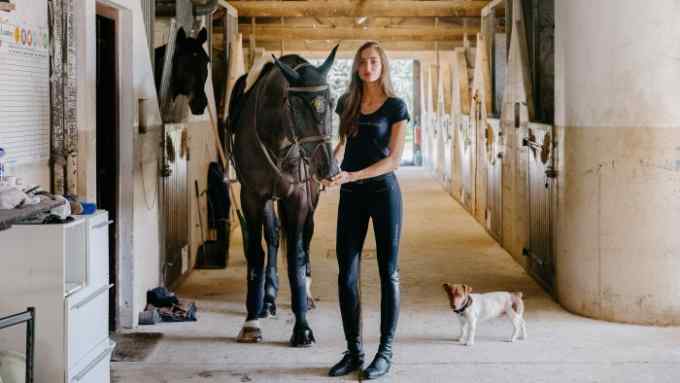
Comments